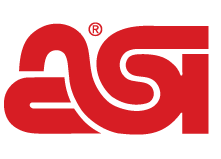Strategy February 18, 2025
2025 Promo Preview: Economic, Legislative & Regulatory Updates
To ensure you stay up-to-date on the latest in economic, legislative and regulatory changes, PRINTING United Alliance experts share what to expect for 2025.
Key Takeaways
• Economic Watch: PRINTING United Alliance Chief Economist Andy Paparozzi highlights the importance of monitoring productivity trends, driven by capital investment, workforce growth and AI integration.
• HR Focus: Potential changes to overtime rules and the impact of AI in HR systems may lead to significant shifts in workforce management and compliance.
• OSHA Changes: Gary Jones, vice president, environmental, health and safety affairs, anticipates further relaxation of OSHA reporting requirements and a decrease in inspections, reflecting a shift in regulatory priorities under the new administration.
• Environmental Rollbacks: Key environmental rollbacks include potential easing of vehicle emissions standards and maintaining current air quality standards for ozone and particulate matter, signaling a continuation of deregulatory policies.
Under a new presidential administration, there will be substantial changes on the horizon. President Donald Trump promised sweeping changes to the government. Not to mention there continue to be ongoing labor challenges and economic fluctuations. To address the most pressing changes for 2025, we spoke with some of PRINTING United Alliance’s most knowledgeable experts in economics, human resources, OSHA, environmental regulations and legislation.
Key Economic Factors To Watch: Productivity, Policy & Trade
Andy Paparozzi, chief economist, says he intends to “watch productivity trends most closely.”
“Productivity has risen smartly as American businesses continue to invest in plants, equipment and software (capital investment is up 28.2% after adjusting for inflation since the end of the COVID-19 recession); benefit from a labor force that has added 7.1 million workers during the past three years; and embrace artificial intelligence to strengthen mission-critical functions from customer analysis to supply chain management,” he says.
He also points out a few factors that could impact everything from inflation to job markets:
- Regulatory reform & government efficiency – Paparozzi notes that PRINTING United Alliance will watch the Trump administration’s work on regulatory reform and government efficiency because minimizing high-cost/low-benefit regulations and delivering government services more efficiently would further boost productivity and the virtuous economic cycle it supports.
- Tariff policies – He says the industry needs answers to questions such as: How much will tariffs increase? Will the increases be targeted or board-based? How much of the increases will American businesses pass along as higher prices and how much will they absorb? And how will our trade partners respond?
- Fiscal & monetary policies – Paparozzi expects fiscal policy to be expansionary, stimulating economic growth but not inflation if solid productivity gains continue. Monetary policy is more of a mystery because where the Fed takes short-term interest rates will depend on unknowns such as how rapidly the economy accelerates and how inflation behaves. Additionally, where global bond markets take long-term rates will depend on unknowns such as the size and trajectory of America’s federal debt. Neither short-term nor long-term rates are likely to fall as much as financial markets expected six months ago, but that’s unlikely to prevent meaningful, durable economic expansion.
HR Trends To Watch: Overtime Rules, AI & Workforce Policies
On the HR front, Adriane Harrison, vice president of Human Relations Consulting, says there are a few HR trends she will be watching closely.
“The Department of Labor, Wage and Hour Division overtime rule will be revisited, which may result in a completely rewritten rule that changes the analysis of what workers qualify,” she says. “[Additionally], workers may not have to pay income tax on overtime wages, which, if passed, would likely result in a large increase of workers who would be willing to perform overtime work. This, in turn, could result in an easier path for employers that are trying to schedule around fewer available workers.”
There are a few additional areas she points to as well:
- Increase of artificial intelligence in HR systems – AI will increasingly be a part of analytics used by benefits and payroll providers. This will result in more accurate information about the workforce nationally, but also will use the data about existing workforce to predict turnover, absenteeism and other trends. The cost of healthcare benefits may be affected by this by the end of the year.
- Crackdown on undocumented workers and more I-9 audits – Make sure you have complied with all I-9 requirements so you don’t have to fear an audit. If you employ undocumented workers, they can seek legal assistance to receive legal status through different paths, some of which may require employer sponsorship.
- State of non-competes – Non-competition agreements (“non-competes”) will not be the subject of further attempts to curtail them by the Federal Trade Commission. In addition, the National Labor Relations Board (NLRB) General Counsel’s memo about non-compete and “stay-or-pay” provisions in employment agreements will be withdrawn by the new NLRB GC that will be installed in the new administration.
- NLRB union decisions – Expect a slow change in the NLRB union organizing, recognition and election decisions. The decisions making it easier to unionize workplaces will be rolled back as the NLRB accepts cases presenting the opportunity to overturn decisions issued in the Biden administration.
- Fewer EEOC investigations – There will generally be fewer Equal Employment Opportunity Commission investigations. Expect much less EEOC activity related to complaints about sexual harassment, sexual orientation and gender identity.
OSHA Oversight & Environmental Rollbacks: Key Policy Shifts Ahead
One trend that Gary Jones, vice president, environmental, health and safety affairs, is watching concerns OSHA.
“One of the first actions Trump took at OSHA was rolling back the requirement for large employers to submit detailed injury and illness reports electronically,” he explains. “In a second term, Trump’s OSHA could move to relax reporting requirements even further, including eliminating requirements for certain employers to keep injury records for extended periods or share them publicly. It is unlikely there will be an effort to increase OSHA’s budget, or even to backfill enforcement personnel who leave the agency. OSHA had the fewest compliance officers in its history during the first Trump administration, and while President Biden increased staffing levels, this will not be a priority for OSHA. It is expected that the number of inspections will decrease.”
On the environmental front, Jones has a number of key programs he and his team plan to target for rollback or alterations:
- Clean Power Plan (CPP) – The Clean Power Plan, introduced during the Obama administration to curb carbon emissions from power plants, was a central target of Trump’s first term. Trump officially repealed the CPP and replaced it with the Affordable Clean Energy Rule. In a second term, Trump could push for even fewer regulations on coal-fired power plants and other carbon-intensive industries, possibly focusing on further reducing emissions standards for existing power plants.
- Vehicle emissions standards – Under Trump’s first term, the EPA rolled back Obama-era fuel economy standards for cars and light trucks. A second term could see further easing of vehicle emissions standards, with the Trump administration likely resisting stricter greenhouse gas reduction goals for the automotive sector. Trump’s EPA could also work to prevent states like California from setting their own vehicle emission standards, a battle that was ongoing throughout his first term.
- Air quality standards for ozone – Under Trump’s first term, the EPA didn’t tighten air quality standards for ozone – a key contributor to smog – and was sued by environmental groups and some states. Biden’s EPA didn’t make any revisions after it said it would reconsider the rule but delayed any decision until after November 2024. In a second term, it’s expected that Trump’s EPA won’t revise the current standard.
- Air quality standards for particulate matter – After the first Trump administration decided not to tighten air quality standards for particulate matter, it was sued. The Biden administration took over the EPA and told the court to halt the lawsuit while it reconsidered the rule. The administration eventually issued a new limit that was tighter than the previous one and was subsequently sued by at least 25 states and other groups. A second Trump term would likely see another withdrawal from the standard and perhaps rolling it back to previous limits.
Tax & Regulatory Advocacy: Key Priorities for the Year Ahead
On the advocacy front, Stephanie Buka, government affairs coordinator, is watching a number of issues around taxes, tariffs and regulations. A few of the points she notes will be key priorities for the Alliance in the coming year include:
- Advocating for the Main Street Tax Certainty Act to make Section 199A permanent, allowing small businesses to deduct up to 20% of qualifying pass-through income, currently set to expire in 2025.
- Supporting the Tax Relief for American Families and Workers Act, which aims to restore immediate expensing for domestic R&D, enhanced interest deductibility on business loans, and 100% accelerated depreciation for capital investments.
- Preserving the Advertising Tax Deduction for business-related advertising expenses, vital for the printing sector’s stability and growth.
- Advocating for the Death Tax Repeal Act to ensure that relatives can easily retain ownership of a family business when the owner dies or retires.
Diving a bit deeper into some of these issues, Buka goes beyond the tax issues, noting that there are plans this year to appeal to President Trump “to take immediate action on manufacturing-critical regulations in the energy, environment, labor, finance and technology spaces. The Alliance will continue to advocate for commonsense regulatory reforms that allow domestic manufacturing to grow and enhance U.S. competitiveness in the global marketplace.”
Toni McQuilken is a senior content editor with ASI’s strategic media partner PRINTING United Alliance. In addition to content sharing, other initiatives launched as part of the partnership include a dual membership program and the ASI Show Pavilion – a “show-within-a-show” concept that will debut at the 2026 PRINTING United Expo in Las Vegas.

